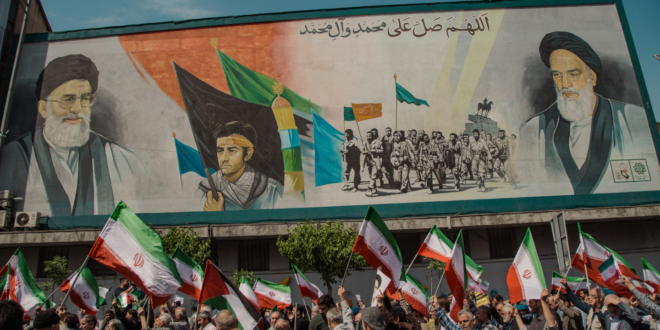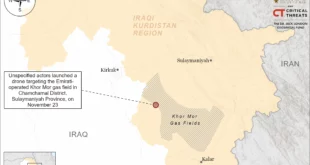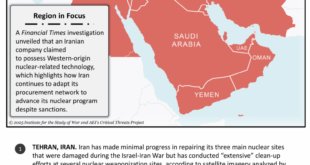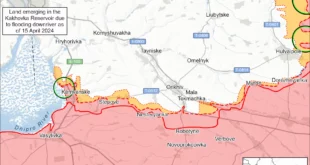On 12 June, Israel launched ‘Operation Rising Lion’, attacking Iran’s main enrichment facility in Natanz and parts of the Iranian ballistic missile program, and killing several Iranian nuclear scientists.
In the aftermath of the attack, which killed over 200 Iranian civilians, Israeli Prime Minister Benjamin Netanyahu issued an English-language address to the Iranian public, expressing his hope that the Israeli military operation would “clear the path for you to achieve your freedom”.
Israel’s attack on Iran came just days before the sixth round of the Iran-US nuclear talks, which are focused on placing constraints on Iran’s nuclear programme in return for US sanctions relief for the Islamic Republic.
Israel has historically been opposed to any US agreement with Iran, challenging both the original Iran nuclear deal in 2015 and staunchly opposing the Iran-US negotiations that have been underway since April.
As such, the launching of an attack at this critical juncture has been read by many as a clear attempt to bring Washington into direct conflict with the Islamic Republic.
Israel’s repeated targeting of Iran’s political, military and energy infrastructure over the last six days, in tandem with Netanyahu’s imploration to the Iranian public to take their freedom “from the evil and oppressive regime” in Tehran has also led many to speculate that Tel Aviv is also pursuing regime change in Iran.
The extent to which Washington is aligned with Israeli objectives, both in terms of employing a military solution to the Iranian nuclear question or with the prospect of regime change in Tehran, remains unclear.
Since 12 June, the Oval Office has adopted contradictory stances, emphasising a willingness to talk to the Iranians, while stating that it is “very late” for Tehran to try and make a deal.
In a continuation of this dual narrative, the Wall Street Journal on 18 June published an article stating that US President Donald Trump had “approved of attack plans for Iran” but was holding off on giving the final order in hopes that Iran might “abandon its nuclear programme”.
It is widely believed that an imminent US attack, should it materialise, would target Iran’s Fordow nuclear facility, significantly setting back Iran’s nuclear programme.
On the same day, Reuters, citing a German diplomatic source, reported that the foreign ministers of Britain, France, and Germany are set to meet with their Iranian counterpart on 20 June in Geneva, to obtain guarantees that Iran will use its nuclear programme solely for civilian purposes.
The source emphasised that the talks would be held “in coordination with the US”. This lends credence to the assessment that not all diplomatic avenues vis-à-vis the Iranian nuclear question have been exhausted.
While Iran and Israel have engaged in a repeated cycle of reciprocal strikes since the 12 June Israeli attack, Iran’s foreign ministry has emphasised Tehran’s willingness to end its “retaliatory actions” should Israel halt its attacks on the Islamic Republic.
Similarly, prior to a rhetorical escalation between the US and Iran, which saw Washington threaten to assassinate Iranian Supreme Leader Ali Khamenei, Tehran also expressed a readiness to continue nuclear negotiations with the US, irrespective of the Israeli attack on Iran.
As such, in line with the stance adopted by Tehran since the inception of the Islamic Republic in 1979, Iran remains open to dialogue, so long as it is not under direct attack by the state with which it is in negotiations.
As nuclear negotiations potentially restart in Geneva, this time under the spectre of a direct Iran-Israel war, it is worth exploring the potential trajectories of the trilateral Iran-US-Israel engagement and the implications this could have for both Iran and the remainder of the region.
Returning to the pre-12 June state of play
Donald Trump’s hesitance to green-light an attack on Tehran, and the tentative scheduling of an Iran-Europe meeting on 20 June, suggests that the window for diplomacy has not yet closed.
As such, should Washington be able to secure an Israel-Iran ceasefire, Iran is likely to return to the negotiating table.
This could allow for Washington and Tehran to agree on one of the proposals that have reportedly been touted by regional mediators in recent days, such as the reported Omani proposal that would see Iran suspend all enrichment for a period of 1-3 years, while allowing “firm” inspections by the International Atomic Energy Agency (IAEA).
Such an agreement, which would constitute a significant compromise by the Iranians, could be enough to diminish the appetite for war in Israel in the short term, particularly as Iranian strikes on Israel demonstrate that the cost of all-out war with the Islamic Republic could prove steep.
Limited US strikes on Iranian nuclear facilities
Washington may participate in targeted strikes on Iranian nuclear infrastructure, such as the Fordow plant, with a view to facilitating Iran’s “unconditional surrender”.
Any US attack on Iran will likely see reciprocal strikes enacted on US regional bases, including those in Iraq, Syria, and potentially Jordan.
In this scenario, the possibility of the US and Iran finding an “off-ramp” that allows for a return to diplomatic engagement is low.
Full-scale war
While Washington may begin with strikes on Iran with a view to setting back Tehran’s nuclear programme, a cycle of reciprocal Iran-US attacks could see both sides cross lines that close the door to diplomacy.
A rapidly escalating situation in which US bases are targeted could see US personnel killed by an Iranian strike, while attacks on Iranian nuclear infrastructure could undermine pro-diplomacy voices in Tehran.
Should the Islamic Republic feel that the survival of the regime is in question, Tehran may choose to operationalise its non-state actors in Iraq, Lebanon and Yemen, who so far, with the exception of the Houthis, have not entered the Israel-Iran bilateral conflict.
This could see both the resumption of a US-Houthi conflict, and Houthi attacks on Red Sea shipping, and renewed Lebanese Hezbollah attacks on Israel.
In Iraq, a revival of the US-militia conflict could see renewed attacks on US bases in the country, and undo long-standing efforts to bring Iran-linked Iraqi militias under the purview of the Iraqi state.
Should the US/Israeli conflict escalate to this extent, it is also possible that Gulf Arab states may not be able to adopt a position of neutrality. Should the Arab Gulf align itself with the US-Israeli Axis, it is possible that the Saudi-Houthi truce in Yemen may unravel, and that Iran-linked militias may target the Gulf’s energy infrastructure.
Tehran may also close the Straits of Hormuz, a narrow waterway which transports one-fifth of the world’s oil, significantly affecting global oil supply.
Multifaceted crisis
The escalation of the Iran-Israel conflict and the increasing likelihood of a US military strike on Iran demonstrate that the window for diplomacy is rapidly closing.
Should Washington conduct a strike on Iranian soil, it will prove exceptionally difficult for Iran and the US to return to the nuclear negotiating table, primarily as any US military attack on Iran could see the emergence of a rapidly escalating bilateral conflict.
In addition to the significant impact a US war with Iran could have on ordinary Iranian citizens, the second-order effect of a war with Iran in which regime change in Tehran becomes the de facto goal is the torpedoing of domestic stability across the remainder of the region.
As such, even as Washington and Tel Aviv prepare for war, diplomacy remains the best possible solution to this multifaceted crisis.
 Eurasia Press & News
Eurasia Press & News



